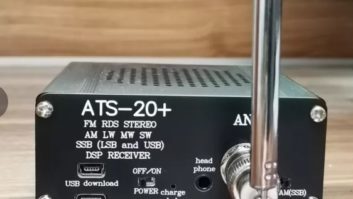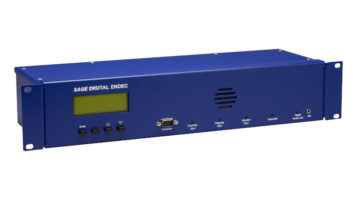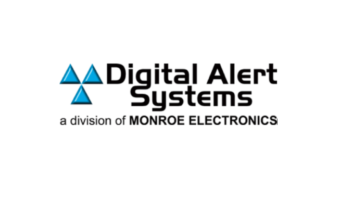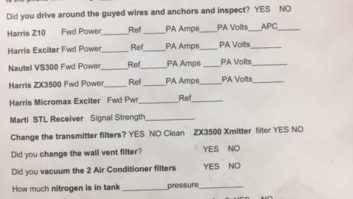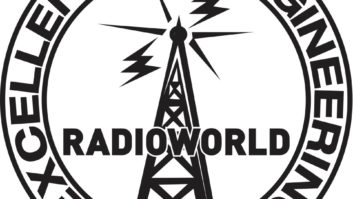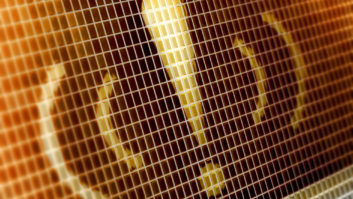Tom Lange of Tecs Plus LLC reminds us that the new CAP protocol deadline means upgrades of current EAS equipment. One popular model is the Sage 3644 Digital Endec. Here’s a way to bench-test and configure a new 3644, getting to know it before it is installed at the station.
Like all EAS systems, the old Sage 1822 and the new digital 3644 need to monitor assigned stations for EAS functions. The best solution is to test with the installed EAS receivers, but removing these from the site essentially would shut down the existing EAS system.
You can use inexpensive car stereos with good sensitivity and selectivity fed with a good FM antenna for this bench-testing phase.
Some car stereos provide line outputs but present a problem when the only outputs from the car stereo are the ones driving the speakers!
An alternative is the use of portable/boom box radios or component stereo receivers, but both would also need protection from overdriving the Sage unit.

Fig. 1: A protection circuit for the Sage Endec. The Sage manual stipulates that audio input levels on the monitor inputs must not exceed 2 VRMS, and 10V levels will destroy some of the components in the unit. An isolation device, such as the 60-480 Adjustable Line Output Converter from MCM Electronics, is a good first step. In addition, the circuit featured here will protect the Sage inputs from excessive signals.
Ideally the car stereo provides RCA line outputs. However, if the MCM isolation unit is not being used, the 4.7 uf non-polarized capacitors, shown in Fig. 1, will block the DC component from the car stereo’s power amplifier.
Tom suggests feeding this circuit with audio from the receivers before connecting it to the EAS unit to ensure that the circuit is working properly. The best bet is to monitor with an oscilloscope and observe an approximate maximum +/- 1.2 V peak swing (2.4 V peak to peak) when the circuit is driven into clipping.
The exact value of this voltage will depend on the diodes and, to some degree, the ambient temperature. The 680 ohm resistors provide current limiting for these clipping diodes and the car stereo itself. Refer to the schematic shown in Fig. 1, as well as the completed protection circuit shown in Fig. 2.

Fig. 2: The completed input protection circuit. In operation Sage recommends input levels between 0.75 V and 2 V. Follow the procedure outlined in the manual and monitor input voltage at all times while adjusting levels once the receivers are connected to the unit.
By keeping levels close to the lowest working level, you will keep clipping and distortion at a minimum. Tom has bench-tested the new model 3644 with a recorded RMT and an off-air RWT with audio levels as low as 100 mV with success.
Tom provides technical services for the transmission equipment at WSHS(FM), a student-run Wisconsin Public Radio affiliate station at North High School, Sheboygan.
* * *
Ethanol-based gasoline can go bad if stored for even a short period of time.
Harry Bingaman is director of engineering for Sunbury Broadcasting; he also does contract work. He has a generator for contract clients and has experienced bad fuel firsthand.
He might use his generator twice a year, so to prevent starting issues he has been using a fuel additive called Sta-Bil. But recently a firefighter friend told him about ToolFuel.
Fire departments use pumps and generators, some of which sit unused for long periods. ToolFuel, marketed specifically to fire and emergency services, contains no ethanol. The company promises “infinite shelf life.”
The product is pricy and you may have to go to a fire equipment supplier to find it. But according to Harry’s firefighting friend, ToolFuel is the way to go.
Sounds like a good investment if you need your gasoline-powered emergency pump or generator to start reliably.
* * *
Dennis L. Benjamin is a member of the Des Moines, Iowa, SBE chapter. He has been employed by SMARTS Broadcast Systems since early 2003; prior, he was a chief engineer. Among his many hobbies, Dennis is active in a number of Linux users’ groups.
He notes that some engineers are having a hard time receiving LP1, LP2 and National Weather Service feeds for their EAS equipment. Recently he was looking for a way to listen to NWS and discovered the Weather Underground website, which provides links to NWS audio feeds.
Dennis was impressed with the listings of NWS for every state.

Fig. 3: The Weather Underground website provides links to NWS audio feeds.
Then a thought crossed his mind that may help stations having a rough time receiving their assigned LP1 or LP2 or even NWS via scanner or programmed standard weather radio. Why not about assign a low-resource computer to pick up a simple Web stream provided by NWS or your LP1 or LP2?
You can do this in Linux, Windows, Mac or even UNIX. You get to recycle an older computer; even a netbook could be dedicated to such a service. All you need is an Internet connection and the ability to schedule an auto-start of a stream playback from the NWS.
The audio usually would be unbalanced (depending on the audio card configuration), but it would be a rebroadcast of the same NWS feed for that location (some may vary depending on state).
Thoughts and further suggestions can be addressed to Workbench at our usual address: [email protected].
John Bisset marked his 40th year in radio in broadcasting recently. He works for Tieline Technology and is a past recipient of the SBE’s Educator of the Year Award. Reach him at [email protected] or (603) 472-5282. Fax to (603) 472-4944.
Submissions are encouraged and qualify for SBE recertification credit.





